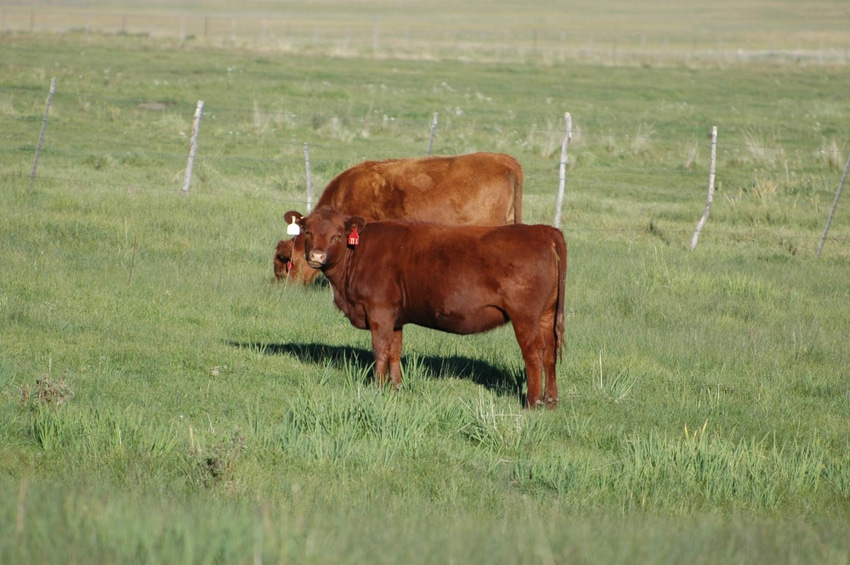How much to feed a heifer—Part II
Last week’s blog on how much to feed a heifer was short on details. Here are some of the results the Montana research has yielded.

I was mildly chastised following last week’s blog on how much to feed a heifer, and rightfully so. One reader with whom I have an email relationship told me that young producers could get the wrong idea about heifer development and end up paying for it later on, both literally and figuratively.
Admittedly the blog was a little short on details, so let me rectify that. The information here, and that contained in last week’s blog, comes from a lifetime productivity study being conducted at the Fort Keogh Livestock and Range Research Laboratory at Miles City, Mont. The study began in 2001 using composite cattle developed at the station. The composite consists of 50% Red Angus, 25% Charolais and 25% Tarentaise.
EDITOR UPDATE: There's more to the story in part three of our heifer nutrition series. Read it here.
In 2001, the herd was divided into two lifetime winter treatment groups. From early December to the first part of March, one group of cows, dubbed the adequate group, was supplemented every other day at the equivalent of 4 pounds of alfalfa per day to provide sufficient protein based on the average quality and availability of winter forage. The second group, dubbed the marginal cows, was supplemented every other day with the equivalent of 2.4 pounds of alfalfa per day.
During periods when forage wasn’t available due to ice and snow, and in the first four to six weeks of calving (March and early April), cows were provided with approximately 22 and 18 pounds of alfalfa per cow per day for the adequate and marginal groups, respectively. All cows were managed as one group the rest of the year.
And what was the effect? Pregnancy rates over eight years of management on these two different treatment groups didn’t differ significantly—90% for the adequate cows and 89% for the marginal cows.
Related: Use cow-pie-ology to monitor your herd's nutritional status
And there’s more. Heifer calves have also been managed at two levels of feed input between weaning and first breeding and each subsequent winter after that. Heifers were weaned in October and placed into an experimental pen that measures individual intake.
The control group of heifers were fed to appetite and the restricted group was fed at 80% of the same diet for a 140-day period ending roughly five weeks before the start of breeding season. Heifers were then fed and managed together until the following winter. Heifers that settled were fed the same as the cow herd—the control group was fed like the adequate cows and the restricted heifers were fed the same as the marginal herd.
Restricted heifer development resulted in improved efficiency, indicted by greater gain-to-feed during the 140-day restriction and greater average daily gain and lighter weight after restriction when grazing summer pasture. Over the 10 years of the study, pregnancy rate didn’t differ significantly—89% for the control group and 88% for the restricted group. Researchers say a conservative estimate is that cost of developing a pregnant heifer was $30 less for heifers in the restricted group.
As they followed the heifers over the years, the researchers note that providing more feed during heifer development and feeding more supplement during subsequent winters improved the proportion of animals retained between two and three years of age, but results at this time indicate that advantage may disappear at older ages.
Bred heifers were managed separately from the older cows during the winter, but the two- and three-year olds were put in with the older cows during the winter. Managing younger cows in a separate herd from the older cows will reduce competition, the researchers say, and could result in the younger animals eating greater amount of supplement without altering the total amount provided.
There’s a lot more information that this research is producing, and I’ll delve into more later. But for now, here’s some data for you to ruminate on.
About the Author(s)
You May Also Like


.png?width=300&auto=webp&quality=80&disable=upscale)
